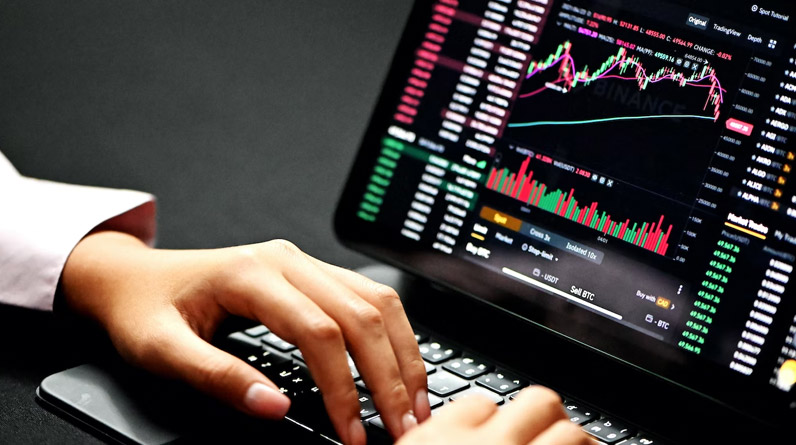8 key economic indicators to watch when trading forex in the UK

Forex trading, also known as foreign exchange or FX trading, involves buying and selling different currencies to profit from the fluctuations in their exchange rates. As a trader, you can buy a currency pair if you believe its value will increase relative to the other currency in the pair, or you can sell a currency pair if you expect its value to decrease.
Forex trading takes place through a global network of banks, brokers, and other financial institutions that make up the forex market, and traders can access the market 24 hours a day, 5 days a week. The market is closed to retail traders on weekends.
In this article, we will discuss what economic indicators are in the context of online forex trading, and the 8 that you must know if you are interested in investing in currencies. Without further ado, let’s get started.
What are economic indicators in the context of forex?
In the context of forex and forex trading, economic indicators refer to statistics and data released by government agencies, central banks, and other organisations that provide insight into the health of the economy. These indicators are important, and you should understand how they work, because they can impact currency exchange rates and are closely watched by forex traders like you.
8 key economic indicators to watch when trading forex
Below are some of the most common economic indicators you may come across on your trading journey.
Gross Domestic Product (GDP)
The GDP of a country or a nation measures the total value of goods and services produced in a country and is considered a broad indicator of economic health.
GDP can affect the price of a currency in these two main ways: an increased GDP typically leads to an appreciation of the national currency, as it signals a growing economy and increased demand for the country’s goods and services. On the other hand, a decreased GDP typically leads to a depreciation of the national currency, as it signals a weaker economy and reduced demand for the country’s exports.
Forex traders should know that the GDP growth rate can also impact currency prices in the following ways: a higher GDP growth rate compared to other countries can make the currency more attractive to investors, leading to an increase in the demand for it, and consequently, a rise in the currency’s value. A lower GDP growth rate, on the other hand, can make the currency less attractive to investors. This can lead to the decrease in the demand for the currency, and consequently, a decrease in the currency’s value.
Consumer Price Index (CPI)
Consumer Price Index (CPI) is a measure of inflation and is a crucial economic indicator that affects currency prices. CPI measures the change in the price of goods and services consumed by individuals and is used to determine the purchasing power of a currency.
When CPI rises, it indicates that the cost of living is increasing, and the purchasing power of the currency is declining. This can lead to a decrease in demand for the currency and a decrease in its value. Conversely, if CPI falls, it indicates that the cost of living is decreasing, and the purchasing power of the currency is increasing. This can lead to an increase in demand for the currency and an increase in its value.
Purchasing Managers’ Index (PMI)
The Purchasing Managers’ Index (PMI) is an economic indicator that measures the manufacturing and services sectors’ activity in a country. It is compiled through a survey of purchasing managers across various industries. The PMI provides insights into business conditions, such as production levels, new orders, and employment.
In forex trading, a higher PMI reading suggests an expanding economy, which can lead to an increase in the value of the currency. Conversely, a lower PMI reading indicates a contracting economy, which can lead to a decrease in the value of the currency.
Retail Sales
Retail sales is another important indiciator that can have a significant impact on how you may approach your forex trading. Retail sales represent the total sales of goods and services by retailers in a particular country. When retail sales are higher than expected, it suggests that consumers are spending more money, which can be a sign of a healthy economy. This can lead to increased demand for the currency, as investors may be more willing to invest in a country with a strong economy.
On the other hand, when retail sales are lower than expected, it can be a sign of a weaker economy, as consumers may be cutting back on spending. This can lead to decreased demand for the currency, as investors may be more hesitant to invest in a country with a weaker economy.
Unemployment Rate
The next important indicator is a country’s unemployment rate.
Generally, higher unemployment rates can lead to a decrease in consumer spending, which in turn can slow down economic growth. This can lead to a decrease in demand for a country’s currency as investors become less optimistic about the country’s economic prospects. Conversely, lower unemployment rates can be seen as a positive sign for a country’s economy and can lead to an increase in demand for its currency.
Bank of England Interest Rate Decisions
The Bank of England is the central bank of the United Kingdom, and its interest rate decisions and other monetary policies have a significant impact on the value of the British pound.
When the Bank of England raises interest rates, it makes holding British pound-denominated assets more attractive, which can lead to an increase in demand for the currency and push its value higher. Conversely, when interest rates are lowered, it can reduce demand for the pound and cause its value to decrease.
In addition to setting interest rates, the Bank of England also uses its decisions on Quantitative Easing (QE) – the process of injecting money into the economy by purchasing government bonds or other securities – to stimulate or cool down the economy. If the Bank of England decides to increase its QE programme, it can increase the supply of money in the economy, which can lead to a depreciation of the pound’s value.
Inflation Rate
Inflation rate refers to the rate at which the general level of prices for goods and services in an economy is rising. When the inflation rate is high, the purchasing power of a currency decreases as the value of the currency declines in relation to the goods and services it can buy. This can lead to a decrease in demand for the currency, which can in turn lead to a decrease in its exchange rate.
On the other hand, when the inflation rate is low, the purchasing power of a currency increases as the value of the currency rises in relation to the goods and services it can buy. This can lead to an increase in demand for the currency, which can in turn lead to an increase in its exchange rate.
Trade Balance
Lastly, the UK’s trade balance is the difference between its exports and imports of goods and services. If the UK has a trade surplus, it exports more than it imports, and if it has a trade deficit, it imports more than it exports.
If a country has a trade surplus, it leads to an increase in demand for the country’s currency, and its value appreciates. Conversely, if a country has a trade deficit, it leads to an increased supply of the currency, and the value of the currency depreciates.
The bottom line
When trading forex in the UK, it’s essential to keep an eye on key economic indicators that can impact currency prices. These include GDP (Gross Domestic Product), inflation rates, interest rates, unemployment figures, inflation rates, the UK trade balance, Bank of England’s interest rate decisions, and more. This is because they can all have a substantial impact on the valuation of the British pound. By monitoring these indicators, you can better anticipate currency movements and make more informed trading decisions.
Leave a reply
You must be logged in to post a comment.












